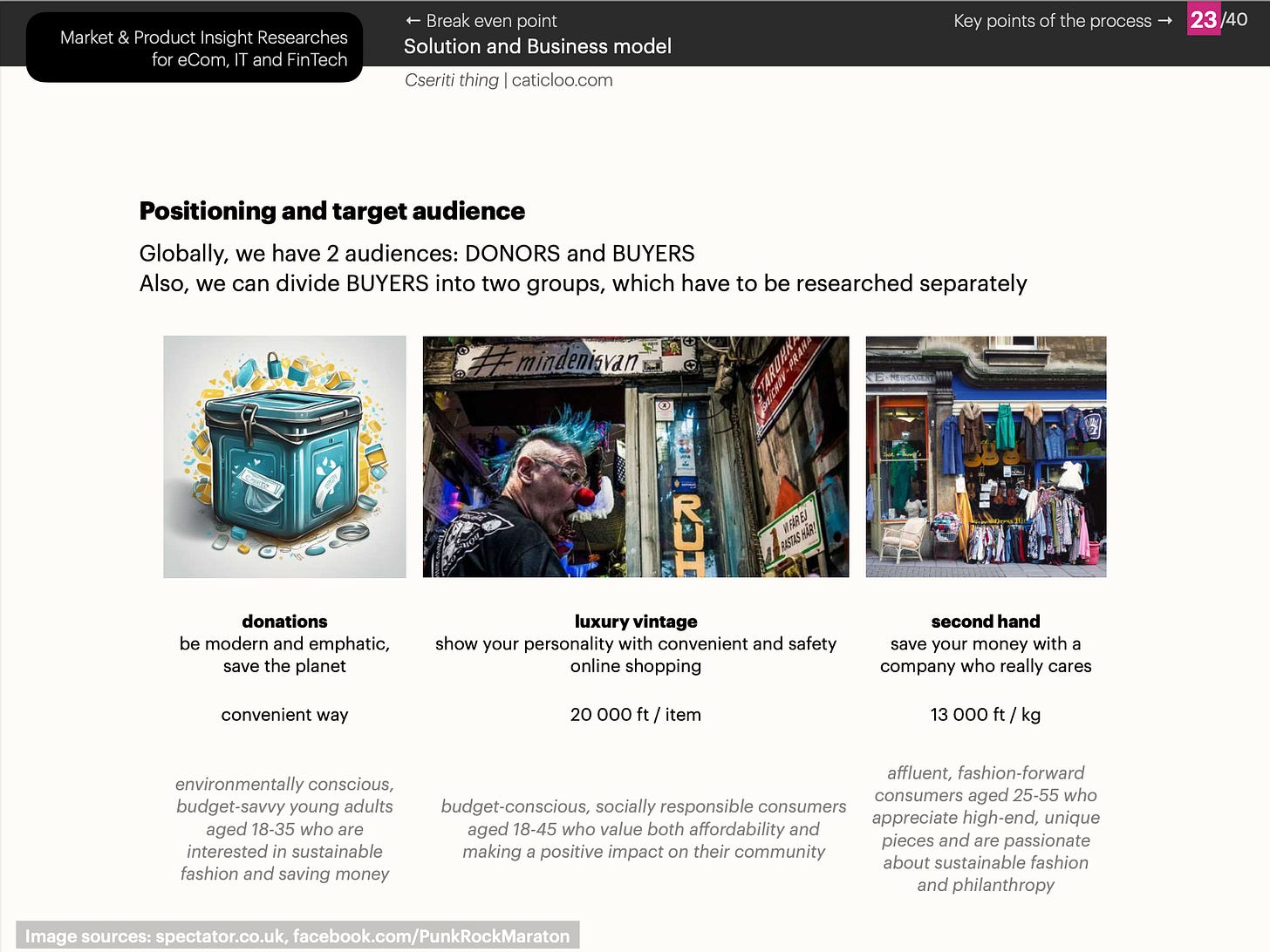How to Turn Budapest's Used Clothes into a Profitable Tech Business: A Data-Driven Analysis
Is it possible to build a profitable business with zero supply costs? Let's explore how modern tech and smart project can turn free donations into sustainable revenue while solving social problems.
Hi, I'm Olga, with IT product research with PO experience in FinTech, eCom, and SaaS sectors. I investigated whether a project like the one in my hometown could be implemented in Budapest. After looking into it, I found that yes: it's possible and profitable, but risky and full of challenges. Let's look at the details.
Full report: http://caticloo.com/Business-Plan-Cseriry-HU.pdf
Market Analysis: Budapest's Ready for Smart Recycling
Budapest presents a compelling opportunity for smart recycling solutions, particularly in the clothing sector. With a population of 1.7 million and an average of 13kg of clothing disposed per person annually, the market shows significant potential.
The city is experiencing a growing environmental consciousness among residents, creating an ideal environment for sustainable solutions. This shift in awareness, combined with the current gap in technology-driven recycling options, positions smart container systems as a timely innovation.
Our analysis indicates that with proper implementation and strategic placement of smart containers, we could efficiently collect around 3000kg of clothing in approximately 1-2 weeks, though this timeline may vary from 1-4 weeks depending on seasonal factors and public awareness campaigns.
The market demonstrates readiness for a technology-driven approach to clothing recycling, supported by both environmental trends and consumer behavior patterns.
Smart Container System: Technology Meets Sustainability
In an era where sustainability meets technology, our innovative smart container system represents a breakthrough in clothing recycling efficiency. This system combines advanced weighing technology with user-friendly digital interfaces to create a seamless recycling experience.
The core of our solution lies in its intelligent infrastructure: containers equipped with precision scales and QR code identification systems are strategically placed in high-traffic areas. Each container can hold up to 300 kg of clothing, making them suitable for significant community use.
The process is remarkably straightforward yet technologically sophisticated. When users deposit clothing, the integrated scales immediately transmit weight data to our central server. Users then scan the container's QR code through our mobile app or website, which triggers a record creation in their personal history. This dual-verification system ensures accurate tracking of contributions while maintaining user engagement.


Security and monitoring are paramount in our design. Each container is equipped with video surveillance capabilities, providing an additional layer of security and allowing for footage review when necessary.
One of the system's most efficient features is its automated notification system. When a container reaches 200 kg capacity, it automatically alerts administrators to schedule a collection, ensuring optimal resource management and preventing overflow situations.
This smart solution represents a perfect marriage of technology and sustainability, demonstrating how digital innovation can make environmental initiatives more accessible and efficient for communities.
Business Viability and Growth Potential
The financial viability of sustainable clothing businesses hinges on achieving a critical monthly revenue threshold. Market analysis indicates that while established low-cost stores generate around 150 million HUF monthly, a sustainable operation can achieve profitability at 26 million HUF, with potential net profits of 5 million HUF at 32 million HUF revenue.
To reach these targets, businesses must implement a multi-channel strategy that includes:
Expansion beyond local markets to increase reach and revenue potential
Diversification across multiple sales platforms, including marketplaces and CPA networks
Investment in brand development and participation in offline sales events
Strategic audience engagement and contact monetization
However, the business model faces several significant challenges:
The predominantly online-only approach conflicts with customer preferences for physical shopping experiences, especially given the price points
Mobile app development may not align with customer behavior, as users show a preference for full-screen web experiences
Success heavily depends on marketing effectiveness and customer participation in the marketing chain
To address these challenges, the business strategy emphasizes:
User-generated content (UGC) as a cost-effective marketing approach, leveraging the charitable mission to inspire audience participation
Distinctive visual branding to engage younger internet users and highlight project relevance
This strategic approach balances operational costs with growth potential while addressing market challenges through innovative solutions and strong community engagement.
Conclusion
The sustainable clothing market in Hungary represents a significant opportunity at the intersection of environmental responsibility and business innovation. Our research demonstrates that with the right technology, strategic approach, and community engagement, smart container systems can revolutionize clothing recycling while creating a profitable enterprise.
The path forward is clear: by addressing current market gaps, leveraging technology, and focusing on user engagement, we can build a sustainable business model that benefits both the environment and the economy. The time to act is now, as the market shows strong readiness for such innovation.
This transformation isn't just about business metrics - it's about creating a lasting impact on how society approaches clothing consumption and recycling. The potential to create positive change while building a profitable enterprise makes this an exceptional opportunity for forward-thinking investors and entrepreneurs.
For detailed analysis, methodology, and complete findings, please refer to the original research report "Cserity Thing, Budapest 2024".







